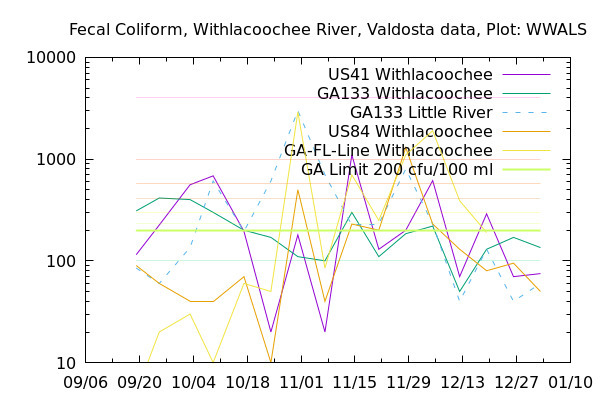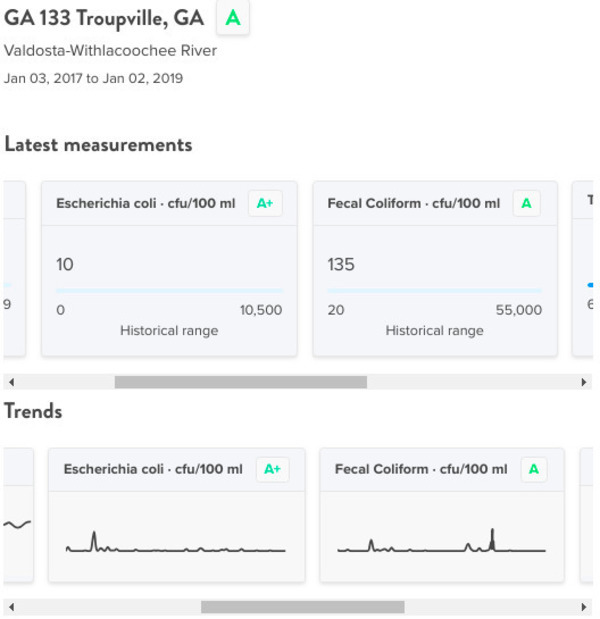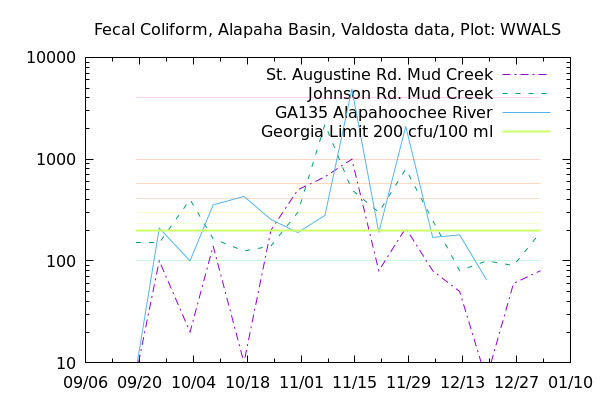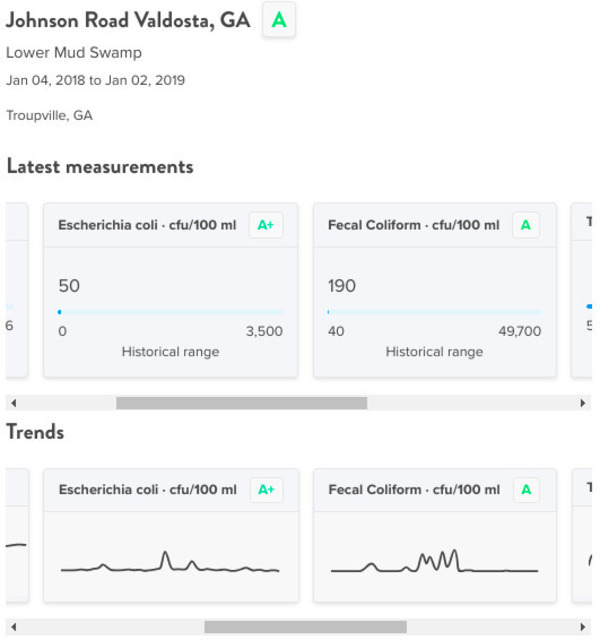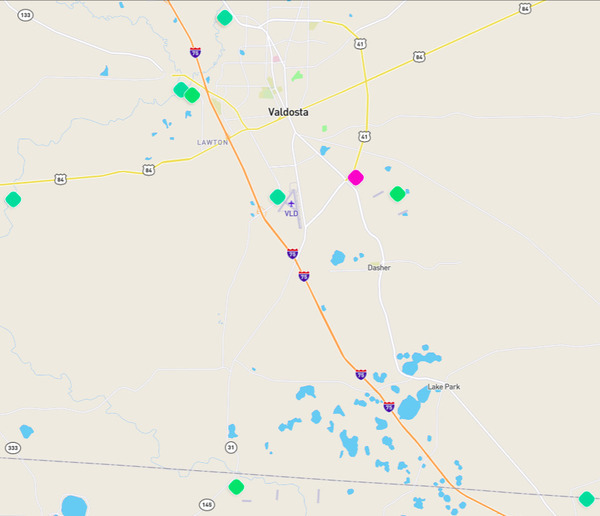Three weeks in a row! The Valdosta river water quality testing data WWALS obtains through a weekly open records request shows all stations tested below the Georgia state limit last Wednesday.
However, like the week before, there are no data for the two stations at the state line, on the Withlacoochee River and on the Alapahoochee River.
The highest Fecal coliform reading in the Withlacoochee River Basin last week was at GA 133 (St. Augustine Road) at the Withlacoochee River.
There was a slightly higher reading in the Alapaha River Basin, but still below the 200 cfu/100ml Georgia limit.
That was at Johnson Road over Mud Creek (which goes into the Alapahoochee River, then the Alapaha, then the Suwannee).
Limits
What do all those horizontal lines mean? And what do the colors indicate, both on the graphs and on the WaterReporter map?
The thick yellow-green line is the Georgia state limit for Fecal coliform in recreational fresh water, from this table:
Source: Bacterial Monitoring, Georgia Adopt-A-Stream.
Georgia Fecal Coliform Standards Bacteria Levels (Fecal coliform) Use Classification 30-Day Geometric Mean
(cfu/100 ml)Maximum
(cfu/100ml)Drinking Water requiring treatment 1,000 (Nov-April)
200 (May-Oct)4,000 (Nov-April) Recreation 200 (Freshwater)
100 (Coastal)— Fishing
Coastal Fishing1,000 (Nov-April)
200 (May-Oct)4,000 (Nov-April) Scenic River No alteration of natural water quality Wild River No alteration of natural water quality
All the rivers in the Suwannee River Basin are classified by Georgia as “fishing”, but we think they should recreational.
We also observe people swimming (and fishing) year-round, not just May through October, so we think the summer limit of 200 colony-forming units per 100 mililiters (cfu/100ml)should apply year-round.
Nonetheless, we’ve included magenta and violet lines for 1,000 and 4,000 cfu/100ml.
That source also refers to some more thresholds, these for E. coli. Since that’s a specific type of Fecal coliform, we’ve used the same thresholds for both types of bacteria.
(from US EPA 1986, 2002a)
Designated
SwimmingModerate
Swimming
AreaLight
Swimming
AreaInfrequent
Swimming
AreaE. coli
(cfu/100 ml)<235 <298 <410 <576
Those designated, moderate, light, and infrequent swimming area designations seem vague and unspecified, but those are the numbers we have to work with. So we used them for letter grades from A+ to F:
- A+: 0-100
- A: 100-200
- A-: Georgia Limit 200 cfu/100 ml to 235 EPA Designated Swimming
- 235 B+: 235-298 EPA Moderate Swimming Area
- 298 B: 298-410 EPA Light Swimming Area
- 410 B-: 410-476 EPA Infrequent Swimming Area
- 576 C: 576-1,000
- 1000 D: 1,000-4,000
- 4000 F: 4,000 and up
Hm, maybe we should use darker colors.
Anyway, the important lines are 200 (or maybe 235), 1,000, and 4,000. If readings are above 1,000 retest and watch out. If above 4,000, steer clear.
Of course, all such indications are merely advisory. It takes 24 hours just to test for Fecal coliform, and conditions could change a lot in that amount of time. Plus what makes one person sick might not affect another.
It does seem safe to assume that the higher the levels of Fecal coliform, the less safe the waters.
More
For more see Water Quality Testing, which includes how you can sign up to help.
-jsq, John S. Quarterman, Suwannee RIVERKEEPER®
You can join this fun and work by becoming a WWALS member today!
Map in Water Reporter
Here is the map of this data in Water Reporter. Click on one of the diamond shapes to see graphs.
-jsq, John S. Quarterman, Suwannee RIVERKEEPER®
You can join this fun and work by becoming a WWALS member today!
-jsq
Short Link:

